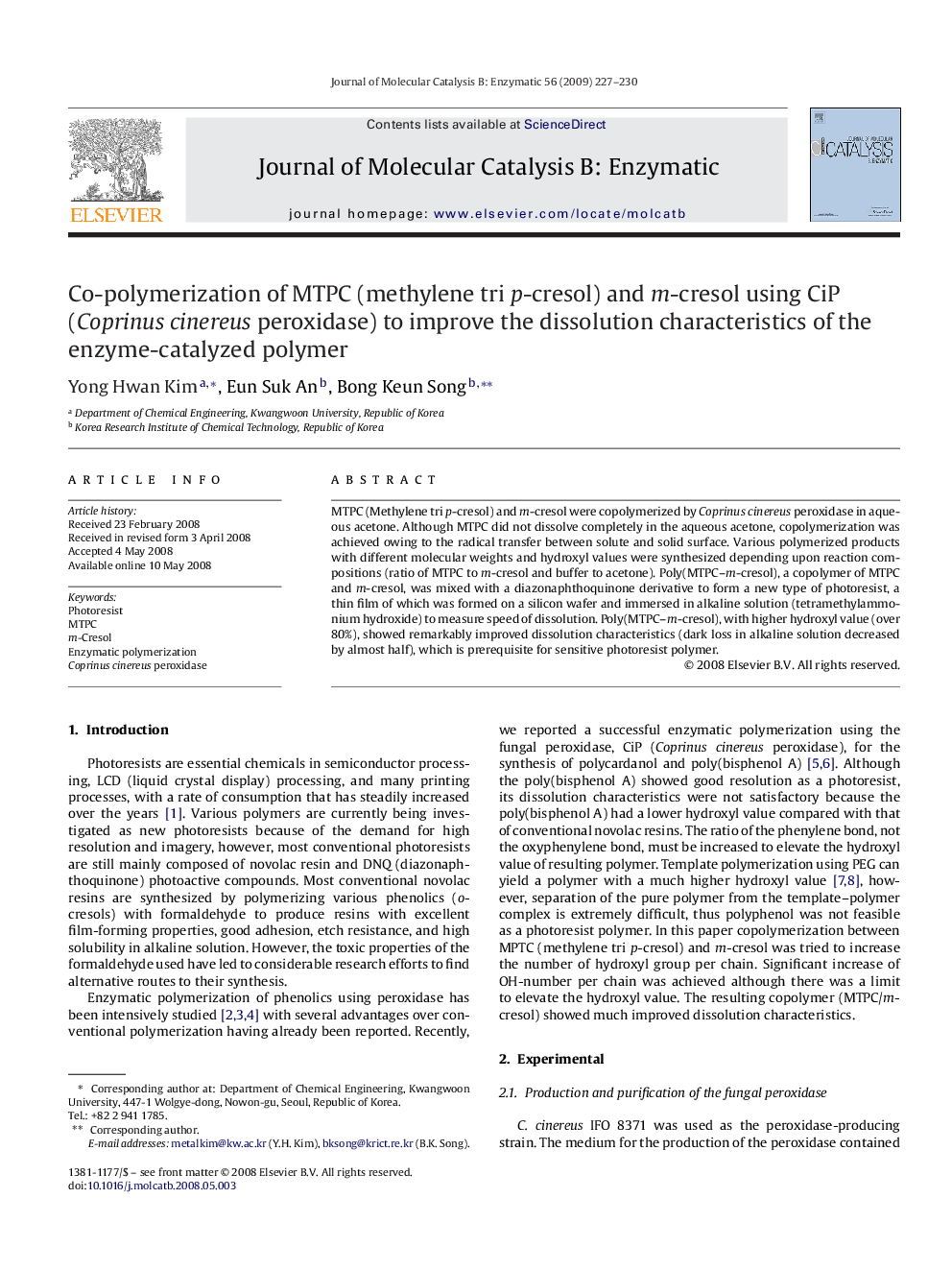| Article ID | Journal | Published Year | Pages | File Type |
|---|---|---|---|---|
| 70774 | Journal of Molecular Catalysis B: Enzymatic | 2009 | 4 Pages |
MTPC (Methylene tri p-cresol) and m-cresol were copolymerized by Coprinus cinereus peroxidase in aqueous acetone. Although MTPC did not dissolve completely in the aqueous acetone, copolymerization was achieved owing to the radical transfer between solute and solid surface. Various polymerized products with different molecular weights and hydroxyl values were synthesized depending upon reaction compositions (ratio of MTPC to m-cresol and buffer to acetone). Poly(MTPC–m-cresol), a copolymer of MTPC and m-cresol, was mixed with a diazonaphthoquinone derivative to form a new type of photoresist, a thin film of which was formed on a silicon wafer and immersed in alkaline solution (tetramethylammonium hydroxide) to measure speed of dissolution. Poly(MTPC–m-cresol), with higher hydroxyl value (over 80%), showed remarkably improved dissolution characteristics (dark loss in alkaline solution decreased by almost half), which is prerequisite for sensitive photoresist polymer.
